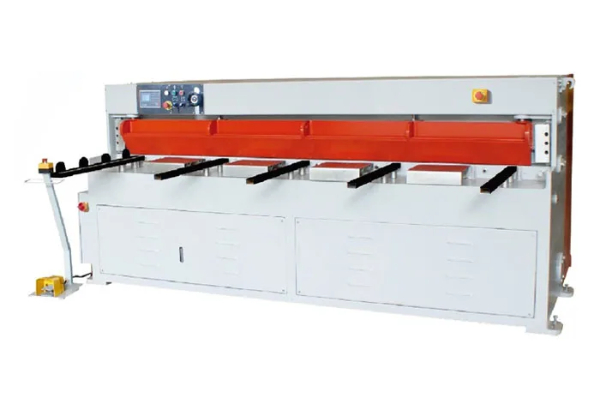
The Future of Air Handling- Trends Impacting Rectangular Duct Machines
- By:Metmac
- 2024-05-06
- 359
With the increasing demand for energy efficiency and improved indoor air quality, the air handling industry is undergoing a significant transformation. Rectangular duct machines, which play a crucial role in distributing air throughout buildings, are at the forefront of these advancements. This article explores the key trends shaping the future of air handling and their impact on rectangular duct machines.
Digitalization and Automation
Digital technologies are revolutionizing the air handling industry, empowering duct machines with advanced features and capabilities. Building Information Modeling (BIM) enables seamless collaboration and coordination between engineers, architects, and contractors, resulting in optimized ductwork designs. Automated control systems monitor and adjust airflow, temperature, and humidity in real-time, maximizing efficiency and occupant comfort.
Energy Efficiency Enhancements
Environmental concerns and rising energy costs are driving the development of more energy-efficient rectangular duct machines. Variable-frequency drives (VFDs) control motor speed, reducing energy consumption during periods of low demand. High-efficiency filters capture more pollutants, improving indoor air quality while minimizing energy expenditure.
Customization and Flexibility
Modern buildings demand customized air handling solutions to meet unique architectural requirements. Rectangular duct machines are becoming increasingly customizable, allowing for tailor-made ductwork configurations. Flexible materials and modular designs facilitate the creation of compact and space-saving systems, catering to the needs of space-constrained environments.
Remote Monitoring and Data Analytics
Internet of Things (IoT) devices can be integrated into rectangular duct machines, enabling remote monitoring and data analytics. Real-time data on airflow, temperature, and energy consumption empower facility managers to optimize system performance, reduce downtime, and make informed maintenance decisions.
Indoor Air Quality
The health and well-being of occupants are paramount. Rectangular duct machines are being equipped with advanced filtration technologies to remove pollutants, allergens, and odors. Anti-microbial coatings and bacteria-resistant materials prevent the spread of pathogens, ensuring a safe and healthy indoor environment.
Integration with BMS
Building Management Systems (BMS) are becoming more prevalent, providing a central platform for controlling and monitoring all building systems. Seamless integration of rectangular duct machines with BMS enables comprehensive energy management, fault detection, and performance optimization.
Conclusion
The future of air handling lies in advanced technologies, energy efficiency, and customization. Rectangular duct machines are evolving to meet these demands, empowering engineers and contractors with innovative solutions that deliver optimal indoor air quality, energy savings, and occupant comfort. By embracing these trends, the air handling industry can continue to drive innovation and create a more sustainable and healthy built environment.
-
Advanced Sheet Metal Rolling, Cutting, and Folding Machines for Efficient Fabrication
2025/10/22 -
High-Precision Sheet Metal Bending and Cutting Solutions for Modern Manufacturing
2025/10/22 -
High-Precision Solutions from Leading Sheet Metal Cutting Machine Manufacturers
2025/09/11 -
Reliable Sheet Metal Equipment for Sale to Support Precision Fabrication
2025/07/17
-
Advanced Sheet Metal Rolling, Laser Cutting, and Folding Machines for Precision Fabrication
2025/10/31 -
High-Performance Sheet Metal Bending and Cutting Machines for Modern Fabrication
2025/10/31 -
High-Quality Sheet Metal Equipment for Sale: Efficient Solutions for Modern Manufacturing
2025/10/31 -
High-Performance Sheet Metal Equipment for Sale: Forming and Shearing Solutions for Modern Fabrication
2025/10/22
-
A Guide to the Latest Innovations in Sheet Metal Folding Machines
2024/11/29 -
Key Features to Consider When Investing in a Sheet Metal Folding Machine
2024/11/28 -
Enhancing Precision with Advanced Sheet Metal Folding Machines
2024/11/27 -
How to Choose the Right Sheet Metal Folding Machine for Your Workshop
2024/11/26






